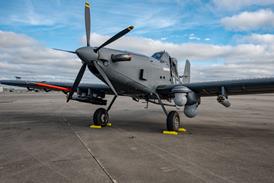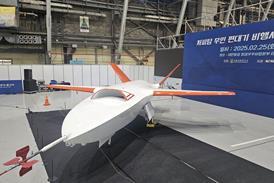THE JAPANESE AND US Governments are once again going to the edge in the latest round of bilateral-air-service negotiations by threatening each other with sanctions and counter-sanctions. The news has been greeted by industry observers, in Tokyo and Washington, with a collective cry of "here we go again".
The US Department of Transportation (DoT) and the Japanese Ministry of Transport (MoT) are playing that familiar game of airline poker again, the latest session coming less than four months after the two sides signed an agreement settling 1995's air-cargo dispute. That deal, hammered out over five rounds of often strained negotiations, failed to address the more basic need for a new overall bilateral treaty, and so laid the seed for this new dispute.
In the latest round, the USA has made the opening bid with a "show-cause" order threatening to restrict the movement of Japan Airlines' (JAL) cargo on certain routes from the end of July. The DoT's justification is that Japan's refusal to grant FedEx additional new Asian routes violates the existing 1952 bilateral treaty.
The Japanese have matched the USA's opening play, and raised the ante, with the threat of counter-sanctions, not just against FedEx, but also certain Northwest Airlines cargo services in Asia. The MoT says that FedEx's demands for new fifth-freedom routes are not covered by the agreement signed in March and the US threat of sanctions is itself a breach of the 1952 treaty.
If this new row goes the way of previous ones, the two sides will return to the negotiating table at the last minute, reaching another interim agreement to prevent the implementation of sanctions. That, however, is not going to be satisfactory and, in some respects, is an unjust solution.
To prevent the endless cycle of talk-threat-talk, Japan and the USA need to sit down and thrash out a completely new aviation agreement. The hurdles are formidable, but, as the long awaited US agreements with Hong Kong and Thailand demonstrate, not impossible.
The original 44-year-old treaty, between the USA and Japan was negotiated when war-ravaged Japan, possessed no civil air-transport industry to speak of and commercial aviation bore no similarity with that of today. The deal leans heavily in favour of US carriers.
Present-day reality lends credible support to Japan's claim that the 1952 treaty is outdated and "grossly unfair". Incumbent US carriers, Northwest Airlines and United Air- lines enjoy a virtually unlimited number of fifth-freedom services beyond Japan, accounting for some 1.8 million passengers a year, estimates JAL. The Japanese flag carrier, in return, is allowed just one twice- weekly service from Los Angeles to Brazil, amounting to 4,000 passengers a year.
The DoT's continued insistence on first resolving all outstanding issues under the existing regime before addressing Japan's demand for a more equitable treaty, appears to be little more than a stalling mechanism. The USA, in response to growing pressure for change, is promoting an "open-skies" policy in place of the old bilateral-air-services treaty. The Japanese, however, think that this is a "flawed" arrangement, and they argue that the US version of open skies would offer no market safeguards, or Japanese access to the huge US domestic market.
With a US presidential election drawing near, the Clinton Administration is keen to avoid being seen making any concessions to Japan at the expense of the US airline industry. The Japanese Government, headed by hardline former trade minister, Ryutaro Hashimoto, also appears equally unwilling to give ground.
No matter how many aces each side thinks it has, however, it is time to put all the cards on the table and forge a fresh, all-encompassing, agreement, applicable to the modern era. This will be achieved, however, only when the USA has the courage to make an honest and moral and review of the stakes.
Source: Flight International























